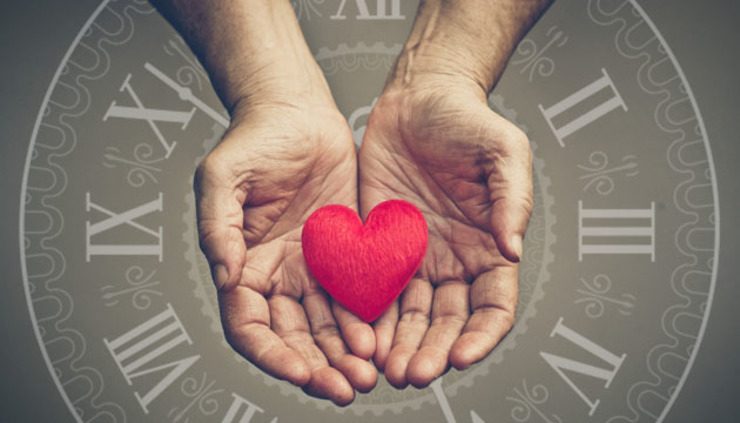SUMMARY
This is AI generated summarization, which may have errors. For context, always refer to the full article.

One of my officemates just had a baby girl during Christmas week. I got the good news with the photo of the newborn while I was reading a story online about Sweetie Sweetie, a little girl in Sierra Leone orphaned by Ebola, asking people who drop by the group home where she stays: “do you want me?”
This is only one see-saw moment plucked from a sea of many in our individual and collective lives. While the “see” side of it does not compel us to give help, the other cries out for it. We can only survive tragedy by showing and receiving compassion. But in an age where the tragedies that befall others could be viewed and turned off on demand, how can we become more compassionate?
Biology tells us that we evolved to have a natural tendency to be compassionate because it results to benefit both the giver and receiver of compassion. The benefits to the receiver are obvious. To the giver, the return of a good deed later or the mental rewards of having done what one wants and needs to do is a benefit in and of itself. “Use” and ‘benefit” to survival are the prime currencies that our DNA carries and tout in its dual ribonucleic pockets to transfer from parent to child.
If that sounds too “cold” and business-like, that is because genes run a no-nonsense enterprise of finding ways to persist to the next generation. There are no “welcome mats” or “thank you cards” involved in the exchange of compassionate tendencies expressed by our genes. We are the ones who do that since while we carry our genes in practically all our cells, we are not mere soldiers of our genes’ survival games.
Many studies have already shown that babies as early as 3 months old already have some sense of moral judgment and act on it. In a recent study, they looked at the brainwaves of kids who were being shown animated videos of helping and hurting and found that they could predict which ones would share. In this study, they asked the kids to give stickers to a kid they were told will drop by later and who did not have any stickers.
The researchers found that the content of the video had some significant influence in the expressed generosity of the kids later. But more significantly, those who exhibited brainwaves associated with some control of emotions, after the expected automatic reaction, are more likely to be more generous and share their stickers. This shows that even for very young humans, compassion results in careful thought and not in simply relying on one’s automatic reactions.
And careful thought, for children and adults alike, requires some focus and we cannot do it while we are in a frenzy doing last minute shopping or trying to get out of a traffic jam. There is no such thing as drive-thru compassion.
This requirement of time is particularly stark in one experiment I learned about. Given a group of divinity students, what would influence their decision to give aid to a beggar? Is it the fact that some of them were assigned to deliver a sermon based on the Good Samaritan? I was quite surprised at the results. Not all seminarians who were on their way to deliver a sermon based on the Good Samaritan gave alms to a planted beggar.
In fact, the chances that they would give alms depended on how much of a hurry they thought they were. It did not matter at all whether they were assigned the Good Samaritan sermon or what their perspective was based on their faith. The final results of the experiment showed that 63% of the subjects who did not think they were in a rush, helped the beggar; 45% of those who thought they were fairly in a hurry gave, and only 10% of those who thought they just did not have time, stopped and gave aid. It is not enough that we are wired to be compassionate, but we must also give ourselves time to arrive at compassion.
But how can we do that when everything is zooming about us now when everything happens at click speed? The psychologist Daniel Goleman who coined “emotional intelligence” was recently interviewed in NPR said this is in fact what is very worrying about this age of digital relationships. He says that human brains have evolved to understand and feel each other’s emotions much through face-to-face interactions. We may be losing much more than “face” with our screen lives.
So is the digital age wired to elicit more compassion? Or we are just now more efficient at showing compassion?
I don’t know the answer. I just know that the question makes me want to scramble for some time to think it through. I myself am guilty of dismissing pleas for help many times because they would take time away for my many self-assigned emergencies.
Compassion literally means our common suffering. Nelson Mandela, my favorite human being of all time, said that compassion is that remarkable thing we do to each other, not out of pity or to fish for praise, but to turn tragedy into a common hope.
In the film “The English Patient,” there was a scene where the two characters had to see-saw in ropes balancing each other in a dark room, taking turns to see stunning frescoes way up in the walls as they sparked flares to view them. I think compassion recalibrates our own soul in view of the other’s so we appreciate how much of each other now, can get us to see illuminated tomorrows, despite the darkness. May we all arrive and welcome our turns at our own see-saws. – Rappler.com
Add a comment
How does this make you feel?
There are no comments yet. Add your comment to start the conversation.